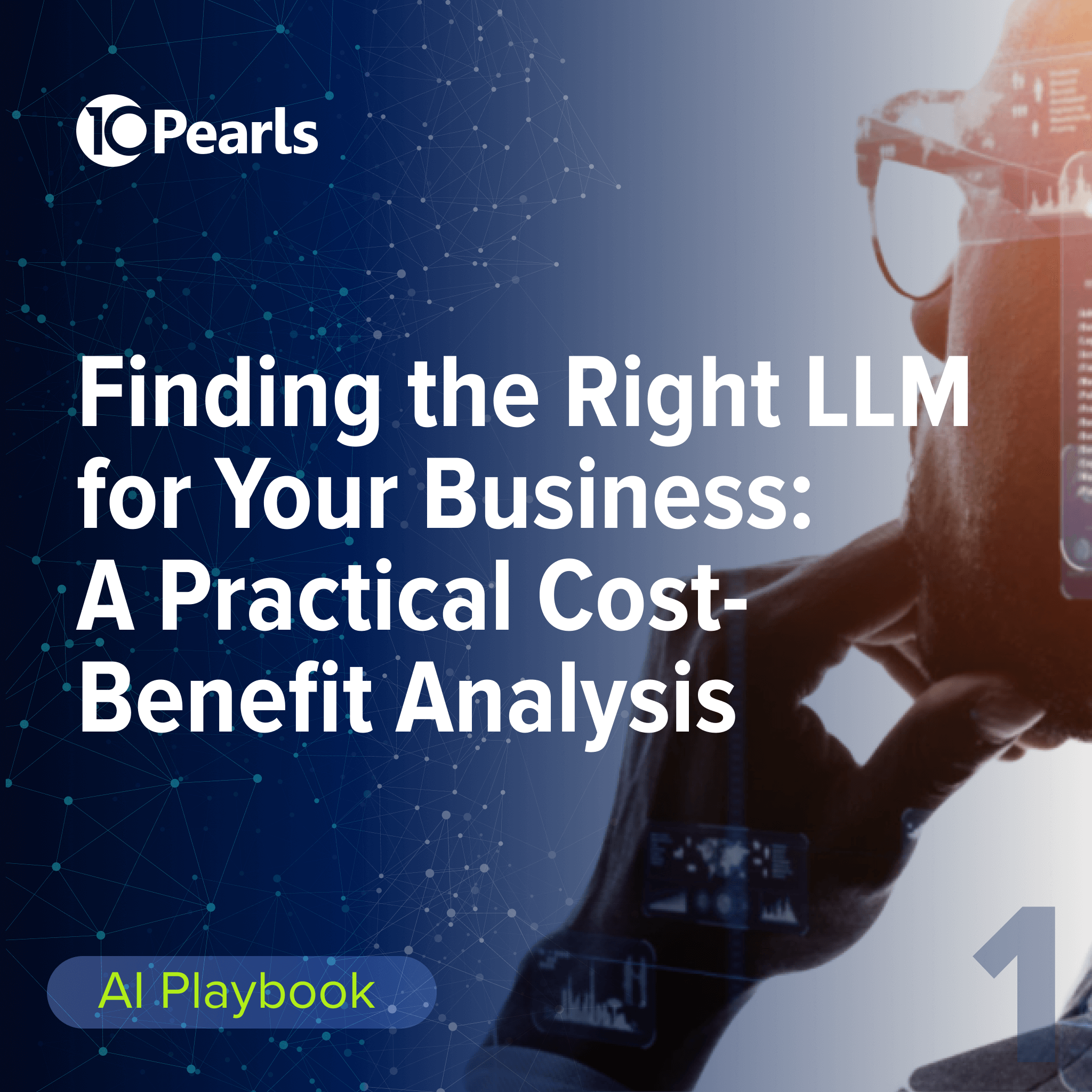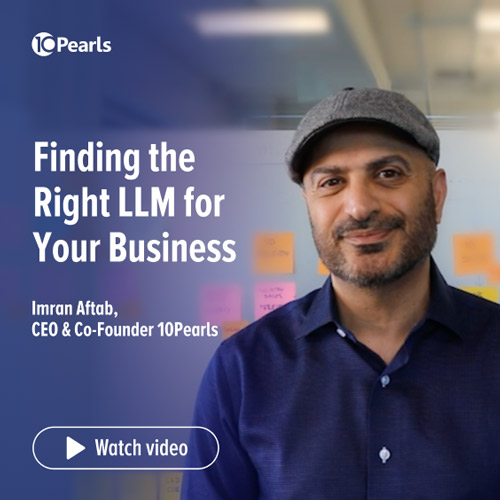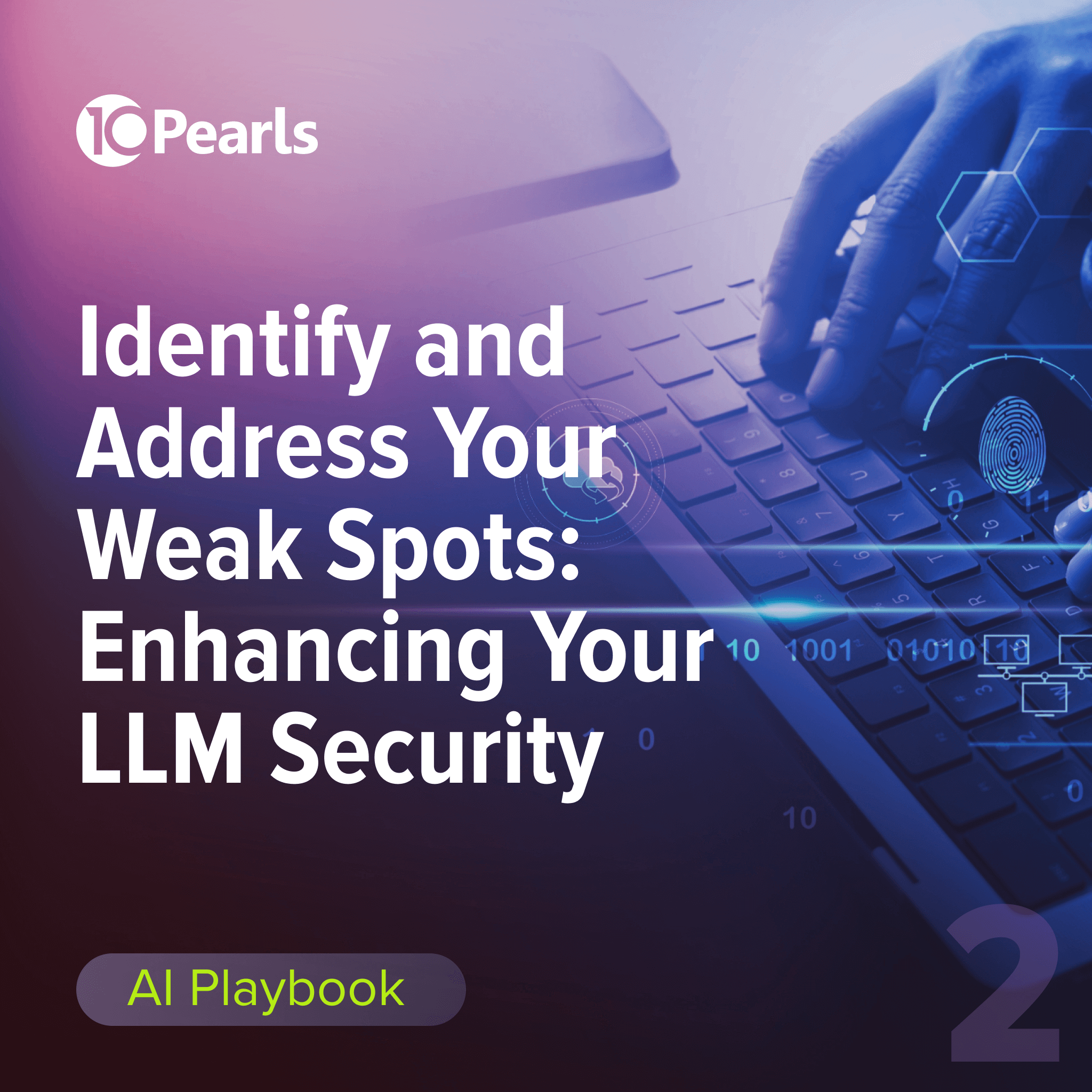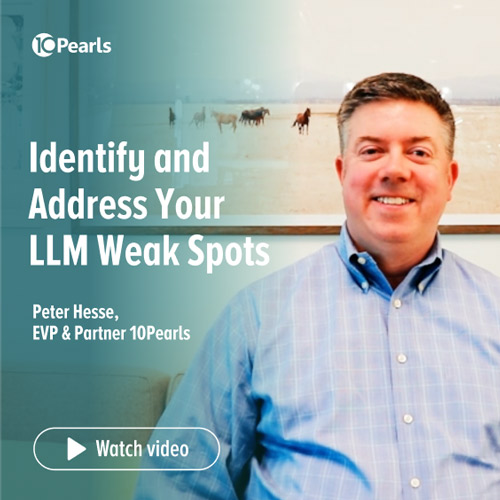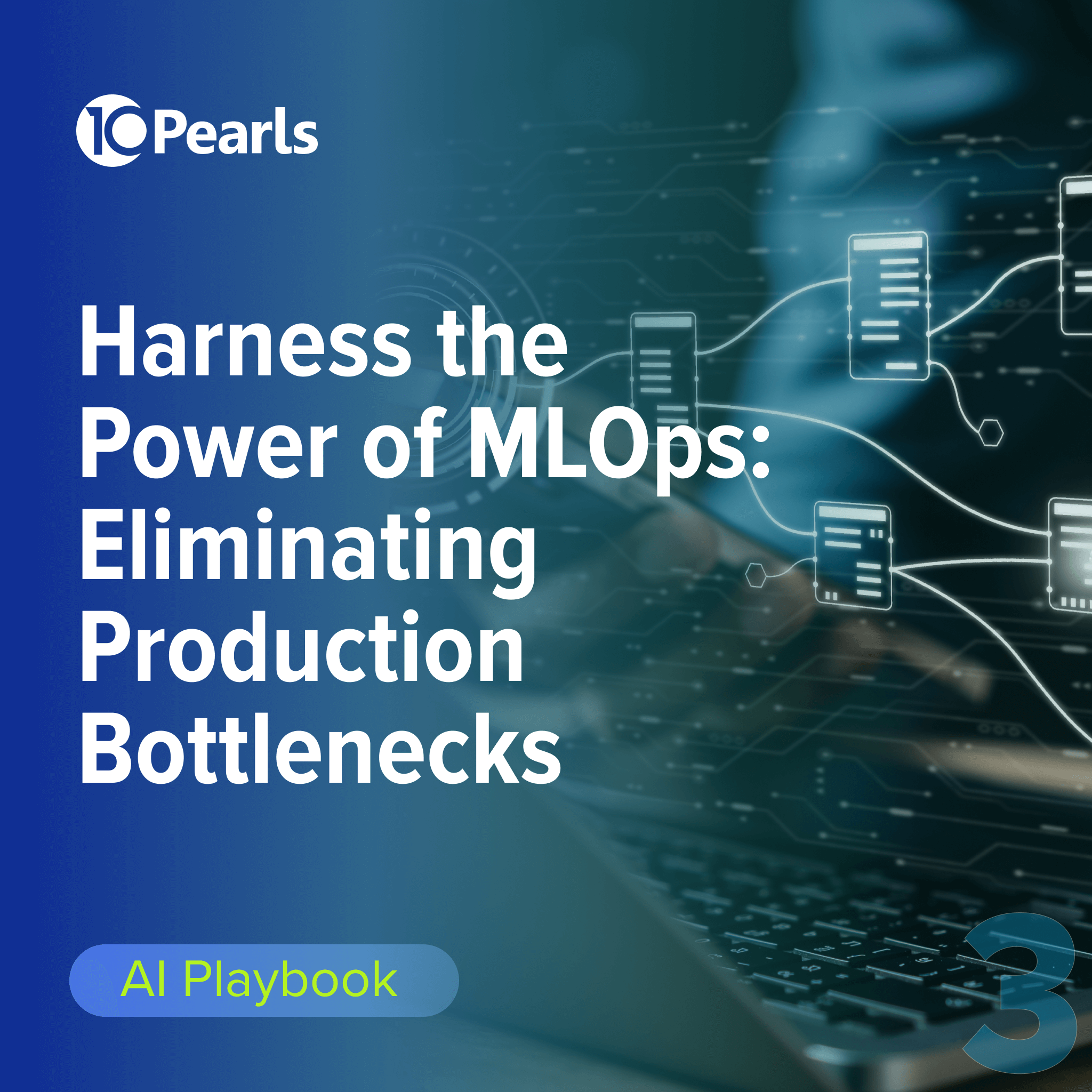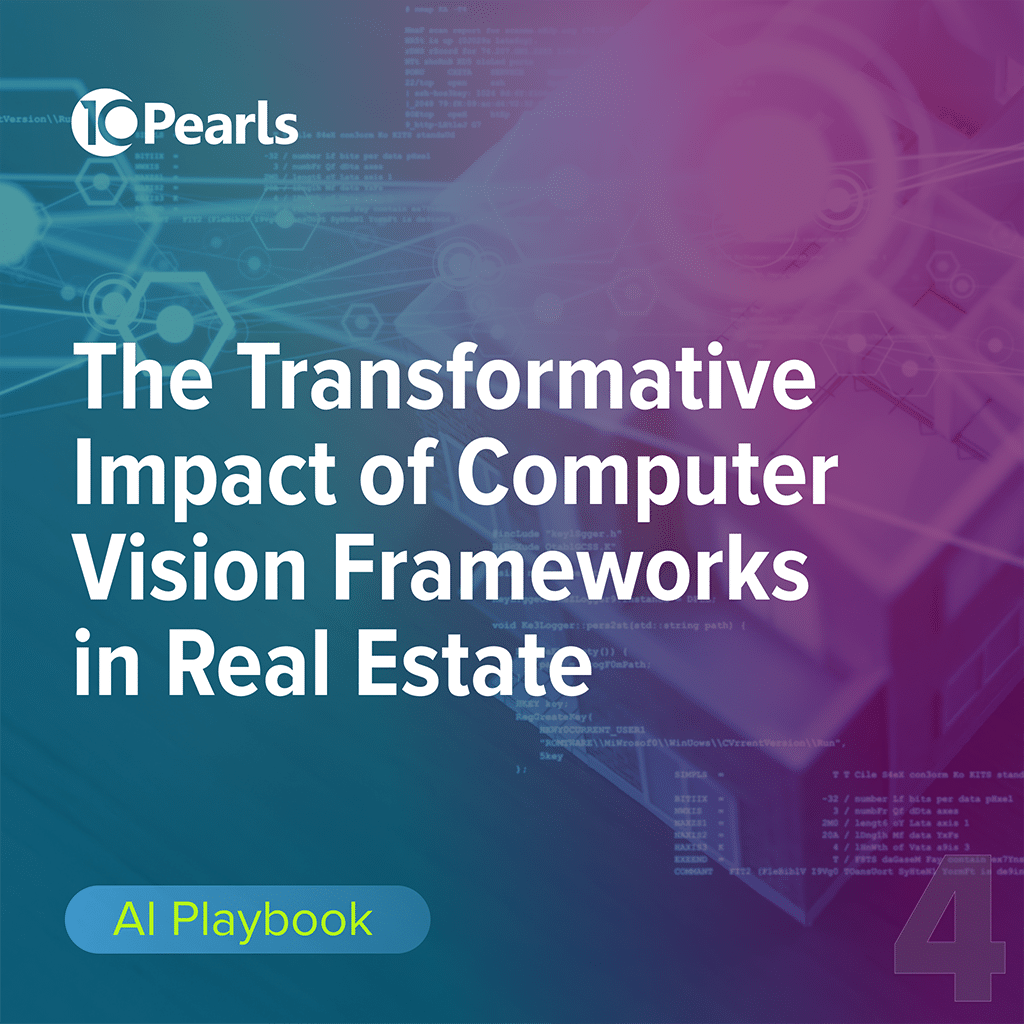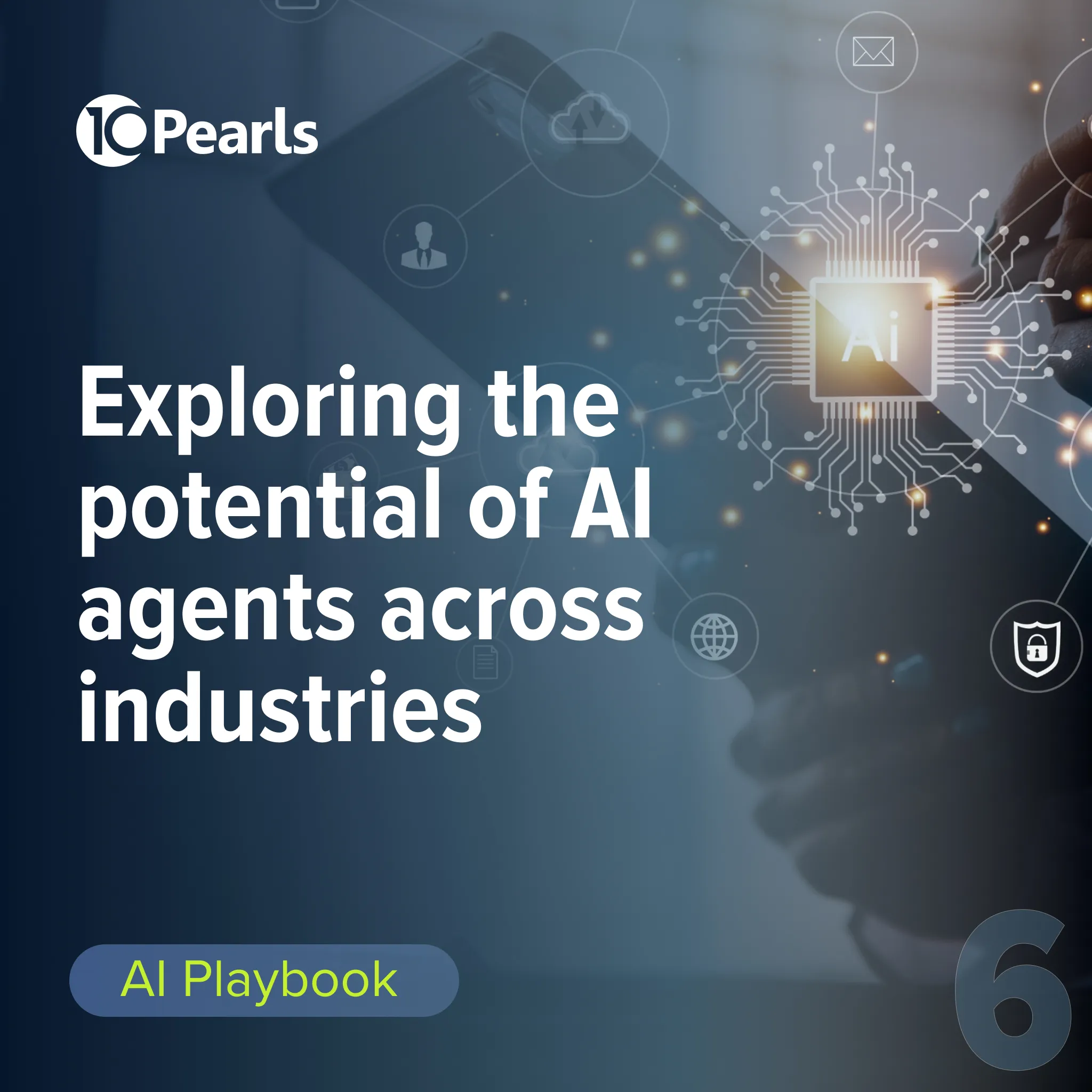Agentic Commerce: More Than Just AI-Assisted Retail
By 10Pearls editorial team
A global team of technologists, strategists, and creatives dedicated to delivering the forefront of innovation. Stay informed with our latest updates and trends in artificial intelligence, advanced technology, healthcare, fintech, and beyond. Discover insightful perspectives that shape the future of industries worldwide.
OpenAI has partnered with e-commerce platform Shopify and the online marketplace Etsy to enable ChatGPT users to make purchases directly within chats. This “instant checkout” capability is powered by the Agentic Commerce Protocol (ACP) that OpenAI has co-developed with payment processor Stripe. For now, this feature is only available to ChatGPT users in the US and only for single-item purchases (no carts yet), but it’s still a significant milestone in the shift toward agentic commerce.
In this blog, we will discuss what agentic commerce is, where it’s heading, and what e-commerce businesses should know to capitalize on this emerging change in the landscape. Then we will dive into OpenAI’s approach to agentic commerce, as its early adoption will likely set the tone for the market.

Blog contents
- What is agentic commerce?
- Core stakeholders Why agentic commerce is the next competitive advantage for retailers
- How to leverage the full potential of agentic commerce
- Integration
- Marketing
- Listing
- Trust signals
- Redefining metrics
- Agentic commerce vs traditional e-commerce
- Understanding OpenAI’s instant checkout
- A major milestone in agentic commerce
- Agentic commerce protocol – The open protocol driving this shift
- Powering the next wave of agentic commerce with 10Pearl
- FAQs on agentic commerce
Blog contents
- What is agentic commerce?
- Core stakeholders
Why agentic commerce is the next competitive advantage for retailers - How to leverage the full potential of agentic commerce
- Integration
- Marketing
- Listing
- Trust signals
- Redefining metrics
- Agentic commerce vs traditional e-commerce
- Understanding OpenAI’s instant checkout
- A major milestone in agentic commerce
- Agentic commerce protocol – The open protocol driving this shift
- Powering the next wave of agentic commerce with 10Pearl
- FAQs on agentic commerce
What is agentic commerce?
Agentic commerce is when users (individuals and businesses) use AI agents for commercial activities like sales, purchases, and negotiations. This includes user-directed actions, automated purchases set up by the user, or giving agents the autonomy to conduct these activities while adhering to user-defined goals and constraints.
This broad definition of agentic commerce expands beyond the autonomy of AI to include human-guided, agent-facilitated actions. The precedent for agents making financial decisions already exists in trading, lending, and other related sectors, typically with regulatorily required human-in-the-loop. The “autonomy” evolution of consumer-oriented agentic commerce is something enterprises need to consider and plan for.
Examples of agentic commerce:
- Amazon’s “Buy for Me” feature allows an AI agent to complete the discovery-to-purchase journey outside the Amazon ecosystem on the user’s behalf. It’s a narrow use case but still an early example of agentic commerce.
- Mastercard Agent Pay and Visa’s Intelligent Commerce can be considered agentic commerce enablers – ecosystems, tools, and standards for secure agent-handled payments.
Core stakeholders
Whether we evaluate the entire agentic AI commerce landscape or focus on specific agentic e-commerce interactions, there are four core stakeholders
- AI agents & LLMs: An AI agent, multiple AI agents working in concert, or an LLM interface like ChatGPT helping individuals or businesses complete commercial actions (buying/selling) is the defining characteristic of agentic commerce. It can also be called conversational commerce when you can complete your discovery-to-purchase journey within your conversation with an AI agent or LLM.
- User: The individual or business leveraging AI’s agentic capabilities to complete a commercial transaction.
- Seller/Business: An individual seller or business on approved platforms (that AI agents/LLMs evaluate listings from) that create, modify, and curate their listings for AI agents/LLMs.
- Payment Processor: The entity that establishes a secure payment flow from user to seller through an AI agent/LLM. From credential management to refunds, payment processors are fully or partially (along with the entity behind AI agents/LLMs) responsible for all the elements of the transaction pipeline
Why agentic commerce is the next competitive advantage for retailers
A recent survey revealed that 58% of consumers turn to LLMs for product and service recommendations. The latest paper from OpenAI indicated that 2.1% of the queries are specifically about “purchasable products.” It is not an impressive number on its own, but when you put it into the context of 700 million users sending an average of 18 billion messages each week, it’s easy to see the opportunity.
E-commerce websites and platforms will need to start preparing for an increase in agentic AI traffic, as well as a gradual decline in direct human traffic. A similar example of AI impacting conventional search methods can be seen with Google as well. When Google introduced AI summaries, many users began using that to find answers instead of clicking on articles.
How to leverage the full potential of agentic commerce
If you are an enterprise with e-commerce offerings, it’s important to start looking into the role and potential impact of agentic AI in e-commerce. If you are a seller on platforms that ChatGPT and AI agents are already searching, this is ever more urgent. Either way, there are five areas sellers and enterprises should start focusing on if they wish to succeed in the era of agentic AI e-commerce.
Integration
Most LLM interfaces possess search capabilities, but a proper integration between them and your platform is crucial to enable search and match capabilities via metadata. It also enables users to leverage platform-specific refund and return features. Businesses with Shopify stores must ensure that they meet any integration requirements if they are not handled platform-wide by default. Sellers from all platforms must start looking into the integration requirements of other agentic commerce initiatives.
Marketing
Since agentic commerce spaces are not yet saturated or pay-to-play, shifting the focus and budget to organic marketing can yield strong results. This would involve matching user (buyer) intent contextually, targeting pain points, understanding Agent/LLM interactions of your target audience, and hitting those pain points with your marketing content. It’s important to understand that LLMs run far more contextually aware searches than marketplaces and search engines, so a consistent and informative marketing approach across multiple channels will help.
Listing
Listings are typically listed from a marketplace’s search algorithm’s perspective or for a broader SEO perspective, but that’s no longer enough. You must understand the kind of questions people might ask an LLM/AI agent when looking for a product like yours, the features they may ask it to vet products for, or any specific signals they might embed in their prompts for evaluation criteria. Overhauling your listings for Answer engine optimization (AEO) is a good start, but a more comprehensive strategy to revise listings for LLMs would be better.
Trust signals
In LLM search, high-quality trust signals can bump your products to the top of the results, and a lack of such signals (reviews and more) might hurt your chances, even if you check all the other boxes. It’s also worth looking into the depth, authenticity, and diversity of trust signals, not just the count.
Redefining metrics
The core performance tracking dimensions would remain the same, like visibility and conversions, but metrics will be changed. They are not yet broadly available, but as agentic commerce evolves, we may likely see metrics like the number of times your product was displayed for relevant searches, how many times your products were selected for further questions, total conversions (that’s a classic), and in-chat vs. Agent-assisted conversions. Preparing for these new metrics can make you proactive about performance tracking in the new, shifting market.
Agentic commerce vs. traditional e-commerce
Even in its developing stage, agentic commerce has the potential to significantly disrupt traditional e-commerce. Below are some key differences between agentic commerce and conventional e-commerce.
| Agentic Commerce | Traditional E-Commerce | |
| Buyer’s journey | Compressed to one window – from discovery to purchase. | Spread over multiple discovery and decision points within the platform. |
| Single-window access to multiple marketplaces | Yes. For all marketplaces integrated with the agent/LLM. | No. Limited to one marketplace. Aggregators exist but divert buyers to seller’s website. |
| Buyer’s product search | Descriptive, prompt-based, and far more granular than what e-commerce platforms allow. | Limited to platform’s search engine capabilities and filters. |
| Product search depth | Agents/LLMs may access and process far more product data than what’s available within listing | Platform search feature is developed for humans and reflects their searchability limitations. |
| Intent awareness | May be grounded in a deeper understanding of buyer’s purchase intent, spending behavior, and previous discussions. | Only what is explicitly conveyed by the buyer. |
| Autonomy | Partial – curating a short list of possible options. Full autonomy is expected in the near future. | None. Buyers make all decisions. |
| Trust signals | Can be gathered from multiple external sources. | Only what is conveyed in listing and via reviews posted on the platform. |
| Agentic Commerce | Traditional E-Commerce | |
|---|---|---|
| Buyer’s journey | Compressed to one window – from discovery to purchase. | Spread over multiple discovery and decision points within the platform. |
| Single-window access to multiple marketplaces | Yes. For all marketplaces integrated with the agent/LLM. | No. Limited to one marketplace. Aggregators exist but divert buyers to seller’s website. |
| Buyer’s product search | Descriptive, prompt-based, and far more granular than what e-commerce platforms allow. | Limited to platform’s search engine capabilities and filters. |
| Product search depth | Agents/LLMs may access and process far more product data than what’s available within listing. | Platform search feature is developed for humans and reflects their searchability limitations. |
| Intent awareness | May be grounded in a deeper understanding of buyer’s purchase intent, spending behavior, and previous discussions. | Only what is explicitly conveyed by the buyer. |
| Autonomy | Partial – curating a short list of possible options. Full autonomy is expected in the near future. | None. Buyers make all decisions. |
| Trust signals | Can be gathered from multiple external sources. | Only what is conveyed in listing and via reviews posted on the platform. |
Understanding OpenAI’s instant checkout
OpenAI announced its “Buy it in ChatGPT” capability and instant checkout feature on September 15th, 2025. For users, it’s as simple as asking ChatGPT to find a product within (optional) a specific price range. They can ask for products with specific features, capabilities, certifications, etc. Sellers/merchants from two approved platforms – Etsy andShopify are already discoverable on ChatGPT if they are connected to the relevant APIs on their platforms. Etsy and Shopify ChatGPT integration is as easy as meeting the platform’s API requirements and granting the required permissions. Users with a Stripe account can make the payment for the item they like with one click
A major milestone in agentic commerce
Despite its platform (Etsy and Shopify), payment processor (Stripe), and regional (US) limitations at the time of writing, OpenAI’s instant checkout feature is a significant milestone for the evolving paradigm of agentic commerce. It’s also a sign of things to come. As trust on this feature grows and ChatGPT becomes better at serving personalized recommendations for products users are searching for, we might see explosive organic growth. This feature may even drive more traffic to ChatGPT and other LLMs, especially as the experience becomes more seamless; inventory grows, and more supporting features (like side-by-side product comparison) become available.
Other growth milestones may include:
- Moving from single item to multi-cart.
- Adding other payment processors like PayPal
- Integrating with other e-commerce platforms. The most significant could be Amazon.
- Over 84% of ChatGPT’s traffic comes from outside the US. This shrinks when we include Stripe and merchant availability by region, but opening this feature to the rest of the world can still lead to a significant increase in sales.
Agentic Commerce Protocol – The open protocol driving this shift
Agentic Commerce Protocol, or ACP, was developed by OpenAI and Stripe and shared as an open standard, so it sits outside these two ecosystems. Any AI agent/LLM, payment processor, or merchant can leverage ACP to establish secure payment channels between the user and the merchant. OpenAI is only the first company to use it, and while only one piece of the puzzle, ACP can play an important role in the growth of agentic commerce.
Powering the next wave of agentic commerce with 10Pearls
ChatGPT’s instant checkout is only the beginning. Enterprises and product engineering partners that understand this shift toward agentic commerce are already working towards harnessing this capability. As a future-focused AI and innovation partner, 10Pearls can help you leverage the full potential of agentic ROI.
Our agentic AI capabilities and deep understanding of the Model Context Protocol (MCP), multi-agent orchestration, and agent mesh frameworks allow us to spearhead a wide range of agentic commerce initiatives. The end-to-end services that start with assessment and consultations help us identify and pursue the best approach to integrating agentic commerce in your business model.

Get in touch with us
Agentic Commerce FAQs
How to implement agentic commerce workflows?
Agentic commerce workflow implementation journey for sellers starts with integrating their online store/marketplace to the agent/LLM that buyers will interact with. They also need to adopt a protocol that enables secure payment through an agent/LLM and a payment processor to facilitate transactions through this protocol. The agent/LLM must have access to products’ metadata through integration and clear and reliable trust signals to increase the chances of visibility and conversion.
What are the best tools for agentic commerce?
The best tools for any enterprise or seller adopting agentic commerce are subject to their ecosystem and approach to agentic commerce. Sellers leveraging an LLM’s native agentic commerce capabilities will only require tools like integration APIs to start, assuming they are independent or their platform is already connected to the LLM (like Etsy and Shopify are to OpenAI, at the time of writing this). In contrast, sellers implementing their own agentic commerce on their own will benefit from agent-development tool kits (like PayPal’s) and orchestration frameworks. They will also need tools like payment processor integration APIs, secure payment protocols, and compliance and verification tools. Performance tracking tools are critical for both types of sellers.
What is the best solution for agentic commerce?
Agentic commerce is an emerging paradigm, and for now, OpenAI’s instant checkout that allows buyers to complete purchases within ChatGPT is arguably the best agentic commerce solution available despite its limitations.
How can marketplaces prepare for agentic commerce?
To prepare for agentic commerce, marketplaces should ensure their infrastructure is ready for more AI traffic (dedicated APIs, rate limits, etc.), listings are enriched with metadata and schemas for AI agents, and they have adopted agentic commerce protocols for safe payment processing. Integrating trust signals and connecting with payment. processors AI agents are leaning toward may help them stand out against competing marketplaces.
How can enterprises get started with agentic commerce initiatives?
Enterprises must start by determining whether their business model is even aligned with the current or evolving agentic commerce paradigm, and if it is, understanding their timeline. Then they must determine if they have the capabilities and data infrastructure for an agentic commerce initiative.
Then they must choose one of the two available paths to agentic commerce – connect with an LLM like ChatGPT or develop their own agentic commerce capabilities and interfaces. The first has constraints related to platform-level permission and integrations. The second requires technical capabilities to develop and maintain agentic commerce and business capabilities to make agentic commerce work within their model.
A mix of both can be practical, and a seasoned AI expert like 10Pearls that also brings diverse industry experience to the table can help enterprises pursue the most optimal approach to agentic commerce.
How does agentic commerce ensure security and compliance?
Agentic commerce leverages the compliance and data security guardrails of the underlying LLM, existing privacy and financial security controls of the payment processor, a secure payment protocol connecting all stakeholders, and merchant identification and verification at the integration layer. However, as agents become more autonomous, a new security and compliance layer will emerge with new checks, like user intention verification, agents’/LLMs’ autonomy limits, transaction provenance, etc.
What industries will benefit most from agentic commerce?
Industries that have more “decision-heavy” products and services, and rich metadata might benefit more from agentic commerce in the first wave. They are naturally positioned to benefit from this new customer journey. For now, this includes electronics, home goods, and travel.
How will agentic commerce transform customer experience (CX)?
Agentic commerce will facilitate a single window customer journey (from discovery to purchase) and allow customers to fetch results from multiple marketplaces at once. Customers will also be able to convey their intents (what they wish to buy) and constraints (budget, features, etc.) more comprehensively through prompts and start trusting agents’/LLM’s recommendations as their positive experiences accumulate.
Related articles
